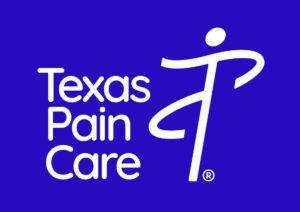
The sacroiliac joint (SI joint) is located in the lower back where the sacrum (the bone at the bottom of the spine) meets the ilium (the large pelvic bone). Explore Joint Pain Treatment in Missouri City for relief and improved well-being.

Did you know that, according to the World Health Organization, an estimated 619 million people are currently living with low back pain? Additionally, it is the leading cause of disability worldwide, making it a major public health issue. There is a good chance that if you’re not currently dealing with some form of lower back pain, that means that you might experience it at some point down the road. If you’re experiencing low back pain in the Sugar Land, Missouri City or Houston areas, the team at Texas Pain Care is here to help you spot the signs and symptoms, as well as provide you with the best and most comfortable Back Pain Treatment options in Texas.
Low back pain is described as pain between the lower edge of the ribs and the buttock, also known as the lumbar region. The pain can be considered acute (lasts a short time, maybe a few weeks), sub-acute (lasts a little longer, up to a few months) or chronic (lasts a long time). Lower back pain can affect anyone.
This particular type of pain is classified as part of musculoskeletal health, which is the performance of the locomotor system, comprising intact muscles, bones, joints and adjacent connective tissues. Lower back pain can occur from damage or strain to any of the below structures in the lower back, including:
While the location of pain might be in the lower back, the pain itself can be categorized as specific or non-specific, which is what makes professional diagnosis and treatment so important. Specific pain can be caused by a structural problem in the spine, disease, or life event. Non-specific pain, however, is when it isn’t possible to pinpoint the exact cause of pain. Most lower back pain cases are categorized as non-specific.
As mentioned before, there could be a myriad of reasons why someone might experience lower back pain, which include diseases, health conditions or injuries. Most often, it’s attributed to an injury to the muscles or tendons in the back, or even arthritis and spinal cord disk injuries.
Irritation: Back sprains and strains are the most common cause of back pain. Most often the injury is to muscles, ligaments or tendons by lifting something too heavy or incorrectly, a tough workout, bad posture, or even sneezing, coughing or twisting.
Breaks/Fractures: Certain life events like a car crash or slip and fall accidents can cause the bones in the spine to break or fracture, causing lower back pain. There are certain conditions that even increase the risk of fractures, like osteoporosis and spondylolysis.
Issues with Discs: Discs, which are soft, rubbery tissue that cushion the bones in the spine, can not only bulge from their position in the spine and press on a nerve, they also wear away and deteriorate with age, causing pain and stiffness. Discs can also tear, called herniated disc, or a person can experience degenerative disc disease with increased age.
Arthritis: Osteoarthritis is the most common type of arthritis to cause lower back pain, and occurs when the cartilage that caps your bones wears away. It's most common in the lower back, or lumbar spine, because these joints carry most of the body weight.
Disease: Tumors in the spine, infections and certain types of cancer can cause back pain, as well as kidney stones, kidney infection, and acute pancreatitis, among others.
Structural problems: Changes in spine alignment (scoliosis) can cause severe back pain, as well as spinal stenosis, which is a condition wherein the spinal column is too narrow for the spinal cord. Any pinching of the spinal cord, too, can cause sciatic nerve pain as well as lower back pain, stiffness and mobility difficulty.
Spondylolisthesis: This condition occurs when the vertebrae in the spine slips out of place, leading to both lower back pain and leg pain.
Health: Lower back pain can also be a result of depression and anxiety. Those who smoke, drink alcohol excessively or live a sedentary lifestyle can also have a higher risk of back pain. People who are also overweight/obese are more likely to have back pain because excess weight puts pressure on joints and discs.
You can also send us a message
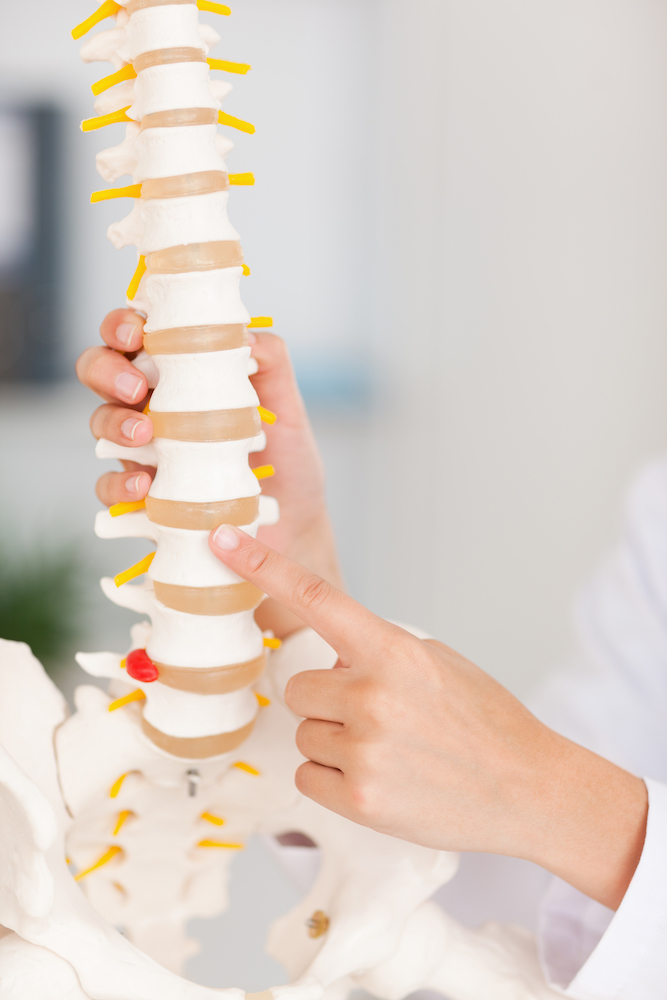
Symptoms of lower back pain range in both pain level, type of pain, and duration of pain. Sometimes the pain can appear gradually, or can be recognized immediately. You might have bent down to pick something up, or extended your reach too far, finding yourself in pain right away. Or, you might just recognize pain but can’t figure out what might have caused it.
Pain can be sharp and throbbing, or dull and achy, and you can feel it just near your buttock area or all the way down your leg(s). If you felt the pain during a difficult exercise or a similar activity, you might have even heard a popping noise when you felt pain.
Not only is the feeling of pain a problem in itself, it could also affect your mood, ability to sleep and work, as well as maintain your desired quality of life.
Additional symptoms of lower back pain can include:
Posture issues: Those who suffer from back pain might find themselves standing bent or not fully straight, or even have the appearance of a flattened versus curved lower back.
Stiffness: Pain in the lower back can cause stiffness, making it difficult to move or fully straighten your back. You could experience a decreased range of motion, feeling the need to stretch or walk around the loosen up.
Muscle spasms: After the occurrence of a strain, muscles in the lower back could spasm or contract at will. These spasms usually cause extreme pain and make it very difficult or impossible to move, stand or walk without issue.
Knowing the makeup of the spine and how it pertains to the functions of the lower back is important to understanding how and why lower back pain can happen. There are three key structures that support the body in the back that can contribute to lower back pain.
Bony Structures
The spine has 33 stacked vertebrae (small bones) that form the spinal canal. Most vertebrae move to allow for a range of motion, and all together it provides a stable but flexible support structure that protects the spinal cords and nerves from injury.
These bony structures are susceptible to more than just fractures. Other ways they can be affected include spinal stenosis (narrowing of the spinal canal), osteoporosis, facet joint osteoarthritis, spondylolisthesis, infections, and neoplasms (primary vs. metastatic lesions).
Intervertebral discs
Sitting between the vertebrae and acting as shock absorbers, these discs are flat and round cushions that are under constant pressure. Not only do they provide support, they also minimize the impact that the spinal cord receives from walking, running, impact, etc. Over time and with use and misuse, these discs can herniate or bulge and cause irritation to the adjacent nerves. Herniated discs are very common and affect more than 3 million people per year. Most often, however, chronic back pain is caused by degenerative disc disease, which occurs when the spinal discs break down. While not life threatening, if left untreated it can lead to:
With more and more use and subsequent wear, discs degrade over time, which can lead to chronic pain. Some conditions that affect discs include herniated discs, disc infection, degenerative disc disease, disc protrusion and extrusion, spinal stenosis, sciatica (nerve root irritation or compression) and facet joint osteoarthritis.
Soft Tissues
Spinal ligaments and muscles are essential for structured yet fluid movement. Ligaments connect each vertebrae to hold the spine in position, while the muscles support the back and help you to move. Nerves branch out through vertebral openings that carry messages between the brain and muscles. Because these ligaments and muscles are constantly being used, and especially with excessive or extreme use (including heavy lifting or strenuous exercise), they can become strained and irritated, causing nerve irritation. Myofascial (muscle and connective tissue) and ligament injuries are a large factor for lower back pain complaints.
Injury, sprain and stress are all culprits that create lower back pain with regard to ligaments and muscles. The most common sources of this type of pain are a torn muscle, tear or strain of the ligament, muscular strain and myofascial pain syndrome.

Lower back pain causes can be acute or chronic, and may be referred from other areas of the body. Pain in the lower back could ultimately affect other areas of the body, as well.
Referred Pain
Sometimes pain in the lower back comes from areas other than the spine. This could include organs in the pelvis, torso and abdomen, most often the kidney, pancreas, appendix, spleen and liver. Pain occurs when there are changes to these organs, which most often includes:
Those who suffer from referred back pain tend to feel the pain on one side of the back, closest to where that organ is located. This is because the nerves become activated when these conditions occur, which causes the pain and discomfort.
Acute Pain
Acute lower back pain is most often caused by a specific activity that causes a sudden injury to the ligaments and muscles that support the back. This can include:
In most cases, acute lower back pain will resolve with rest and time, possibly physical therapy. However, it’s important to talk to your doctor to ensure that nothing more serious is occurring, such as serious health issues like pancreatitis, kidney stones or kidney infection. If you experience any of the following symptoms, it’s imperative that you speak with your medical professional right away, and there could be something more to your lower back pain:
Chronic Pain
Chronic lower back pain is not only debilitating, but is also long-lasting. For those who experience chronic pain in the back, it’s pain that lasts longer than three months and includes pain not only in the back but also sciatic pain that extends to the hips and down the legs. Most often, symptoms begin gradually but persist for an extended period of time. Causes of chronic lower back pain are numerous and can include:
You can also send us a message
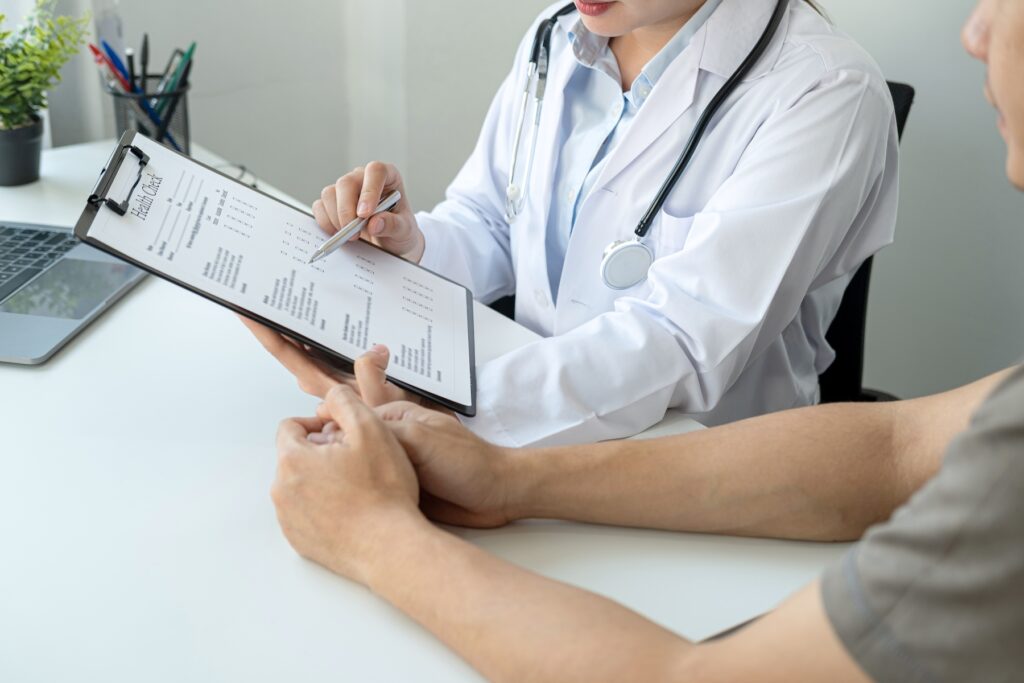
For several reasons! First and foremost, it’s important to rule out that the lower back pain you’re experiencing isn’t the result of a larger issue, such as cancer. Secondly, there’s no reason to endure pain if you don’t have to!
Getting a professional opinion as to what is causing you pain is the first step in finding the best course of treatment for the pain. The professionals at Texas Pain Care are dedicated to helping their patients experience as little pain as possible, which means treating the pain and also the cause of the pain.
To best diagnose what might be causing lower back pain, a provider will perform a comprehensive physical exam with the goal to locate any spinal tenderness as well as limitation in range of motion. It might even be necessary to take X-rays, a CT scan, MRI or bone scans, which depends on the patient’s medical history, chief complaint and the provider’s clinical suspicion as to what is causing the pain.
While you might find relief in bed rest, laying down or taking it easy, that won’t ultimately help your back pain in the long run. Most physicians agree that movement, being cautiously active and calling your doctor are the best steps to getting out of pain and finding a current and long-term solution. Doing so in the most minimally invasive way possible is also the goal.
For lower back pain relief from the best pain management clinics in Texas, look no further than the Texan Pain Care team. We utilize every option, which range from least invasive to surgical options, and everything in between.
Epidural Steroid Injections
These injections are a great option for alleviating some pain syndromes, including degenerative disc disease. The treatment method involves injecting a steroid into the epidural space (where the tissues and veins are located) of the spinal cord, with the purpose of pinpointing and treating the irritated nerves. The steroid will also spread to other parts of the spine, where it will reduce inflammation and irritation.
The role of the injection is typically to provide sufficient pain relief to allow a return to everyday activities and to make progress in physical therapy. This pain management technique has been used for decades and is considered an integral part of the non-surgical management of sciatica and lower back pain.
Medial Branch Blocks
MBBs, or medial branch blocks, are a minimally-invasive, non-surgical lower back pain treatment that is most often used for neck and back pain that is related to arthritis. These blocks, or injections, are effective in reducing the inflammation and irritation in the facet joints of the spine that are causing pain. This treatment can take up to six weeks before pain relief will be noticeable, but can last anywhere from eight months to several years.
Medial Branch Radiofrequency Ablation
When self-care options and conservative treatment don’t remedy lower back pain, chronic or severe pain may require more extensive intervention. Medial branch radiofrequency ablation can help find relief for those who are living with neck or back pain that simply won’t go away. This option is most often a minimally-invasive and preferred treatment for pain from arthritis in the back.
With this technique, your expert Texan Pain Care physician will use radio waves to destroy the nerve fibers that carry pain signals along your medial branch nerves to block the pain and help you achieve relief. The high-frequency electrical current that is used ablates or “burns” a small area of nerve tissue, which allows for quick relief and long-lasting pain control.
Sacroiliac joint injection
A sacroiliac joint injection is used to diagnose or treat lower back pain that comes from your sacroiliac joint, which is the joint where the spine connects to the pelvis. This minimally-invasive procedure involves injecting a mixture of local anesthetic and/or corticosteroid medication directly into the joint. Depending on the mixture of medications used, the duration of pain relief varies but can last anywhere from several days to months.
Trigger Point Injection
If you’re experiencing muscle spasms, trigger point injections is a great treatment option for you. This procedure involves injecting a local anesthetic, sometimes combined with a steroid medication, into a “trigger point” where your physician believes is the root of your lower back pain, with the goal to relax muscles and relieve pain.
Trigger points may form after acute or repetitive trauma, which causes stress on muscle fibers, leaving them to be stuck in a contracted state. Sometimes you can feel these knots when you rub your muscles.
Interspinous Spacers
For patients who suffer from lumbar spinal stenosis (LSS), there are not many treatment options that fall between conservative care and invasive surgery. With the interspinous spacer, these patients now have the option for a minimally-invasive procedure that the team at Texas Pain Care provides to patients battling with LSS.
Spinal stenosis occurs when the passageways of the spine are narrow and compress the nerves of the spine. As LSS progresses, patients may experience symptoms that include leg pain, numbness and cramping, to decreased endurance when walking or standing. The treatment involves the placement of an interspinous spacer in the back of the spine between the spinous processes.
Spinal Cord Stimulation
Nerve signals are being sent to the brain constantly. When nerves become damaged, whether due to trauma or other medical conditions, they send pain signals to the brain even if an injury is not occurring.
Spinal cord stimulation (SCS) is a relatively new technology that has been proven to help manage chronic pain when the cause cannot be removed or the injury cannot be repaired. The technique uses an implanted electrical device under the skin and over the spinal cord, which confuses the spinal cord and pain processing centers in the brain. Painful signals are replaced by tingling electrical signals. A trial is first done to determine if this device will help long term, and if so, a permanent device is implanted.
The device consists of a stimulating wire or “electrode” or connected to a control unit or “generator.” By placing a stimulating electrode over the spinal cord, the pain signal cannot be sent up from the spine to the brain. After a patient has been evaluated and non-surgical treatments have been used, spinal cord stimulation is considered to help manage chronic pain.
Basivertebral nerve ablation
For those patients who are dealing with chronic back pain and haven’t been able to find long-term relief, this treatment is a great option. This procedure is specifically for patients with vertebrogenic low back pain. Basivertebral nerve ablation is an outpatient, minimally-invasive procedure in which the vertebral body is accessed utilizing X-ray guidance through a small skin incision. The basivertebral nerve, which sends pain signals to the brain, is burned or “ablated,” resulting in a cessation of pain signal transmission.
The dedicated team at Texas Pain Care in Missouri City, Sugarland and Houston areas knows how uncomfortable and debilitating lower back pain can be. This is why we aim to provide comprehensive, comfortable and efficient care to get you – and keep you! – out of pain. Please reach out today to schedule your appointment, and start enjoying your standard quality of life tomorrow.

The sacroiliac joint (SI joint) is located in the lower back where the sacrum (the bone at the bottom of the spine) meets the ilium (the large pelvic bone). Explore Joint Pain Treatment in Missouri City for relief and improved well-being.
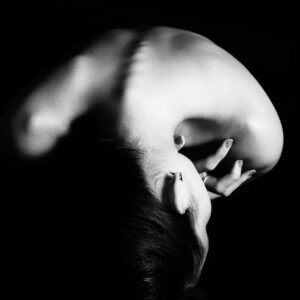
When most of us think about scoliosis we remember a quick check in middle school. However, there’s much more to it than that. While most scoliosis diagnoses are made in adolescence, scoliosis symptoms can increase or appear as the body ages, allowing for a late diagnosis and subsequent late treatment.
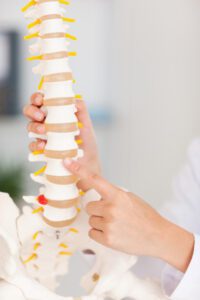
There are plenty of reasons why a person will experience temporary back pain at some point in their life. Lifting something too heavy, twisting too quickly, exercising too feverishly, and more. However, when the pain won’t go away after a few days of rest and relaxation, there’s reason to believe that there’s a larger issue at hand.
Get out of pain
Get back to living
Treatments
Conditions
